Focus On Geophysics
-
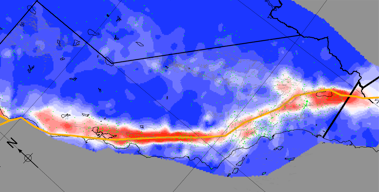
Tectonophysics studies the physical processes that underlie plate tectonics, including how the creeping flow in the convective mantle connects to the lithospheric deformation that is expressed geologically in processes such as plate boundary faulting and mountain building. Specific research projects at USC include: 1) studies of the dynamics of mobile belts, such as the Mediterranean; 2) constraining the force transmission and evolution of subduction systems, including the Caribbean, Japan, and the Aegean; and 3) the long-term dynamics and kinematics of a continental transform, such as the North Anatolian transform and the San Andreas system in the western United States.
-
Research in fault systems studies the behavior and evolution of faults and regional fault networks from the viewpoint of integrated mechanical systems. These efforts involve a large number of our faculty and span a wide range of disciplines, from state of the art analytical and numerical modeling through rock mechanics and seismology to field geological analysis of past earthquake behavior and structural evolution. Through interactions and feedback between geophysicists and geologists, USC research seeks to understand the complex behavior of natural fault systems with a particular focus on documenting and understanding emergent behaviors.
-
 is a diverse science that allows for the study of inaccessible regions of Earth’s interior, from crust and lithosphere to the innermost core. Structural seismology is based on the analysis of seismic waveforms from earthquakes to understand the evolution of the heterogeneous structure of Earth. Research projects based on structural and observational seismology aim to understand structure at various depths and resolutions. Active structural seismology research at USC is focused on understanding how the dynamics, chemistry, and evolution of Earth’s structure relate to geological observables, such as plate tectonics, volcanism, and earthquake occurrence.
is a diverse science that allows for the study of inaccessible regions of Earth’s interior, from crust and lithosphere to the innermost core. Structural seismology is based on the analysis of seismic waveforms from earthquakes to understand the evolution of the heterogeneous structure of Earth. Research projects based on structural and observational seismology aim to understand structure at various depths and resolutions. Active structural seismology research at USC is focused on understanding how the dynamics, chemistry, and evolution of Earth’s structure relate to geological observables, such as plate tectonics, volcanism, and earthquake occurrence. -
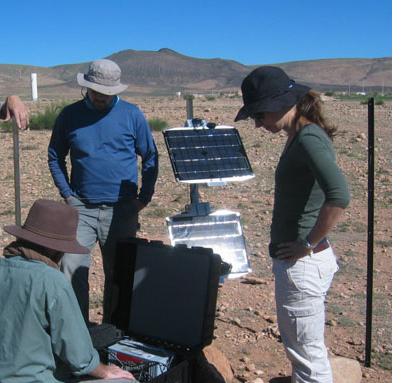
Fieldwork-based geophysics research at USC is focused on paleoseismology, active source seismology, and broadband array seismology. Our paleoseismology group uses techniques such as high-resolution seismic reflection imagery, paleoseismologic trenching, and traditional field mapping of active and ancient faults. The structural seismology group at USC has 15 broadband seismometers and a 24-channel seismic system that are used to define individual field experiments to address specific questions about Earth structure using a variety of analytical techniques using the same data set. Integrating USC’s instrumentation with IRIS PASSCAL and USGS experiments has allowed for some of the largest single-purpose deployments in seismology. Combining these seismic results with constraints from other sub-disciplines in the Earth sciences allows for a multidisciplinary approach to answering broad geoscience problems. Current field-based research is being conducted in the western Mediterranean, Anatolia, Taiwan, Japan, and southern California.
-
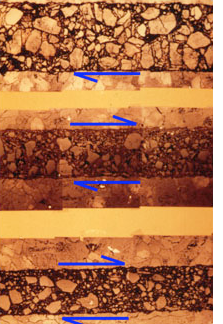
The department has an active program in rock mechanics focused primarily on understanding the nucleation and propagation of earthquake ruptures. Problems include understanding the mechanical processes that generate fault-gouge, fault-breccia, and off-fault fracture damage during a large earthquake and how these fault zone materials generated by previous earthquakes affect the propagation of future events. Specific areas of interest include the effective frictional response of a granular layer, the evolution of the size distribution of fragments within a fault zone, and the mechanics of fracture-damaged rock. Such studies also include the important effects of ground water and temperature. This work is closely linked to field studies of the structure of exhumed fault zones.
-
Studies in this broad field can be generally divided into problems involving details of individual earthquake ruptures and problems associated with collective behavior of many earthquakes and faults. Examples of research topics in the former category include nucleation, propagation and arrest phases of earthquake ruptures, energy partitioning during failure episodes between seismic radiation and dissipative processes like heat and new rock damage, and observed earthquake source properties. Examples of research topics in the latter category include spatio-temporal patterns of earthquakes and faults, emerging correlations of dynamic variables, long-term evolutionary processes, and various types of statistics.
Geophysics faculty at USC work in collaboration with various colleagues on a wide range of problems in both categories of study, using theoretical tools from continuum and statistical mechanics, numerical simulations of dynamic ruptures in models with bimaterial interfaces, non-planar faults and spontaneous generation of rock damage in the bulk, and observational studies associated with laboratory experiments and in-situ seismological and geological data.
Illustration above depicts problems associated with individual earthquake ruptures and collective behavior of many events. (a) Examples from physics of earthquakes and faults. (b) Examples from behavior of ideal gas.
From Ben-Zion (Rev. Geophysics, 2008)
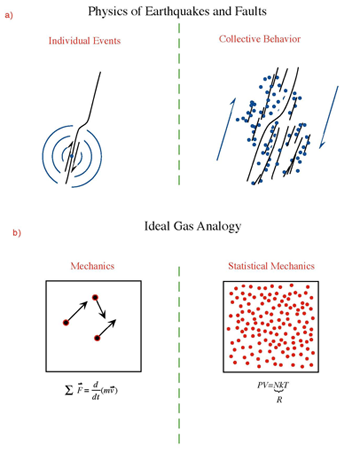
-
Deep Earth Dynamics studies the chemical, physical, and geochemical state of the lower mantle and core in the context of Earth’s system evolution. Research projects at USC include studies of the variability of the magnetic field as generated by the geodynamo, seismological and geodynamic analysis of thermo-chemical heterogeneity distributions, and detection of deep mantle plumes.
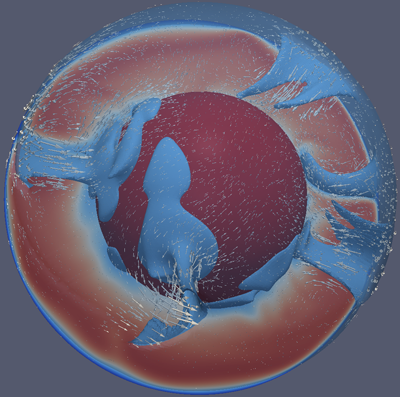
-
Many of the outstanding geophysical problems, such as understanding fault systems and earthquakes, plate tectonics and continental evolution, or the core dynamo process, involve processes that operate over a huge range of spatial and temporal scales. Numerical modeling is one approach to make progress in achieving deterministic insights into these systems, which we pursue at USC with computational experiments, simplified systems-level models, and full scale, massive simulations. Technical interests include high performance computing, development of statistical methods, and visualization.
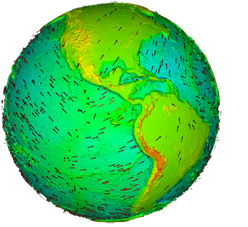
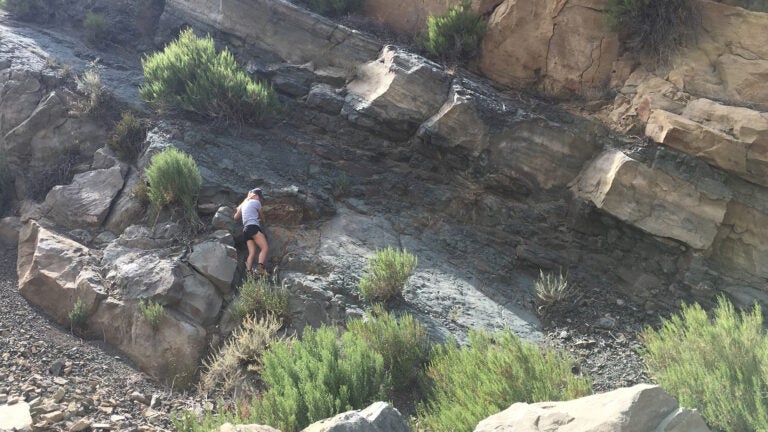
Fieldwork adventures
Student scaling side of a mountain
(Picture courtesy of Frank Corsetti)
Related Courses
Please take a look at the recommended courses in Geophysics
